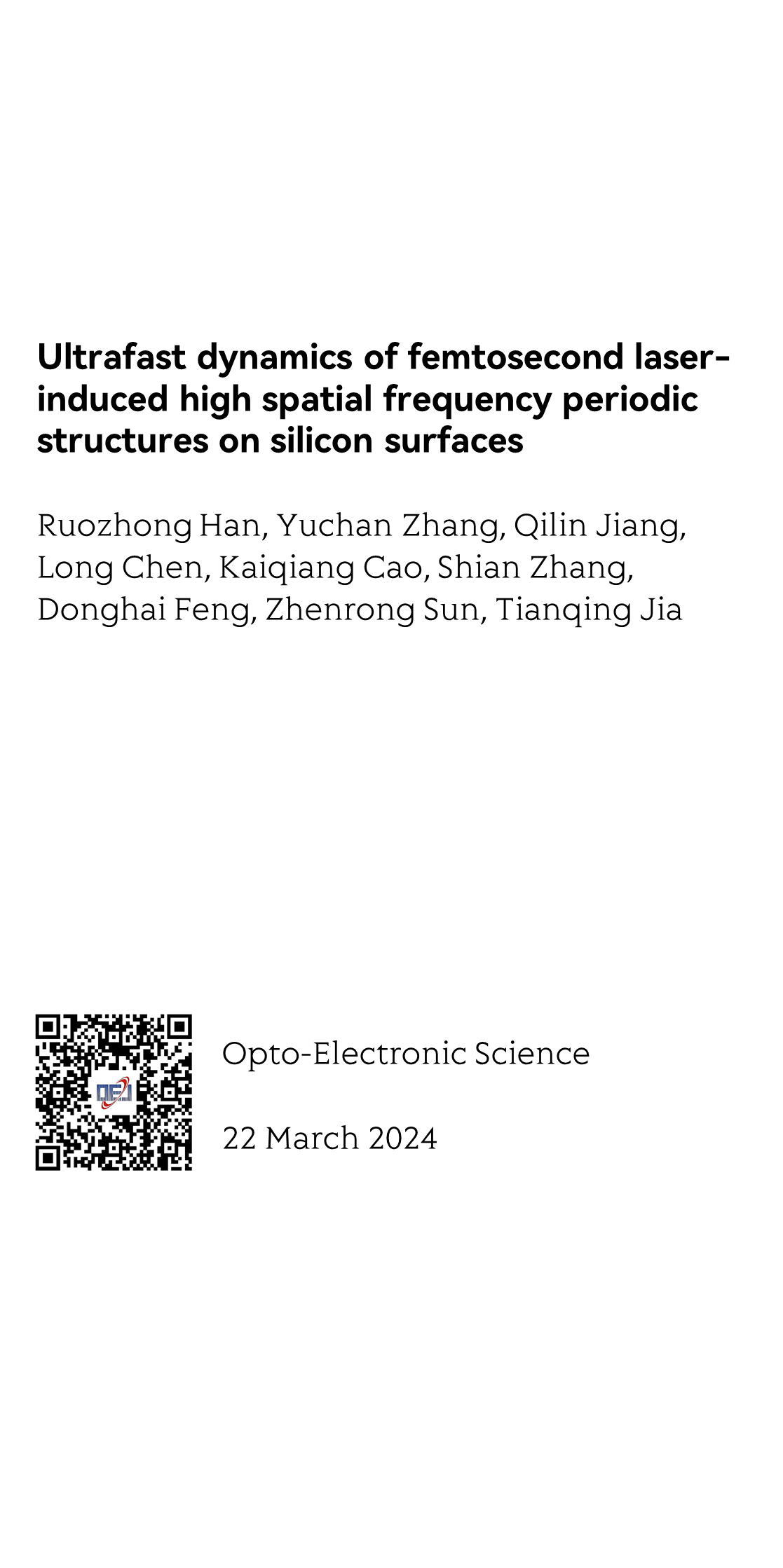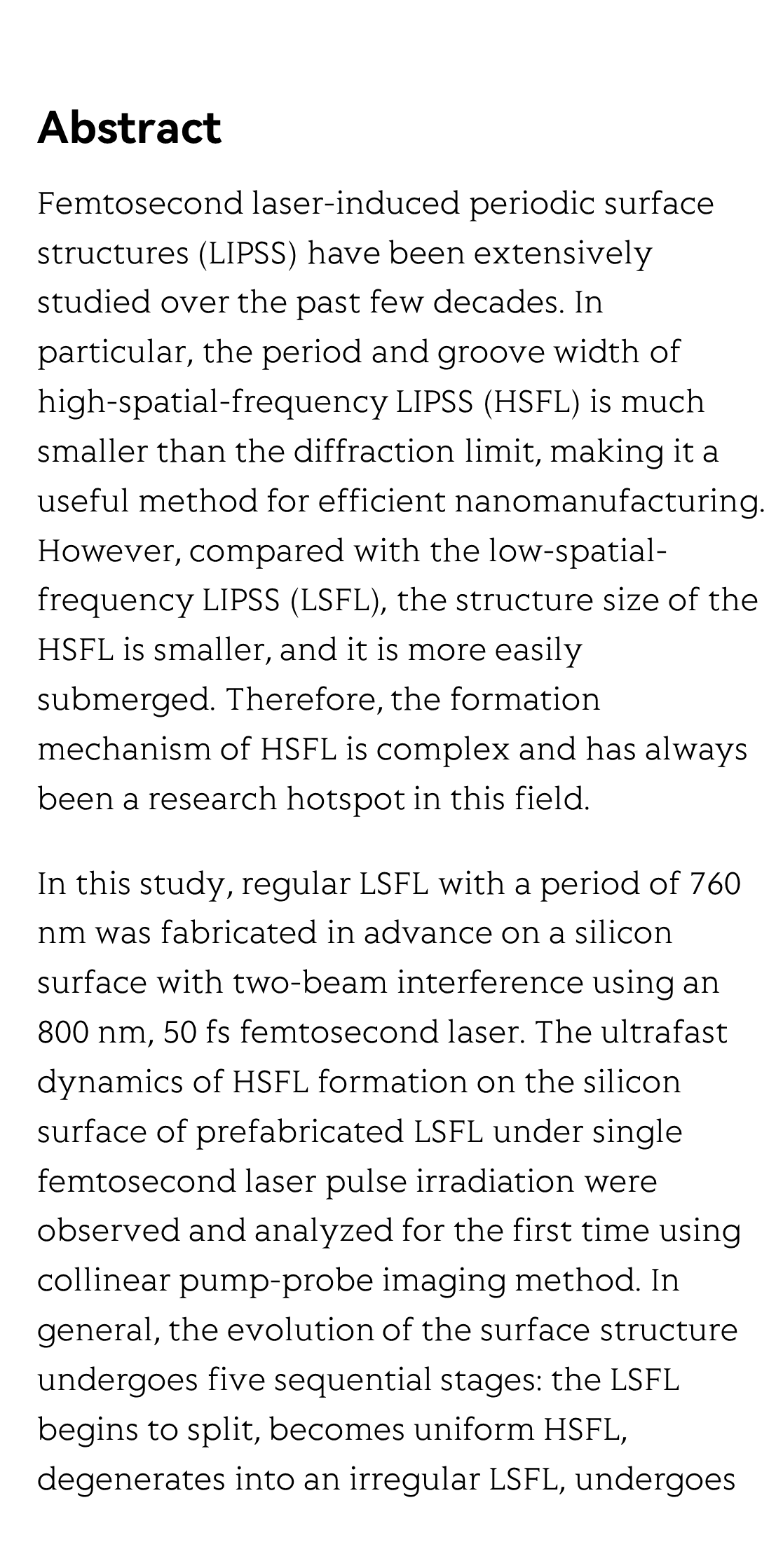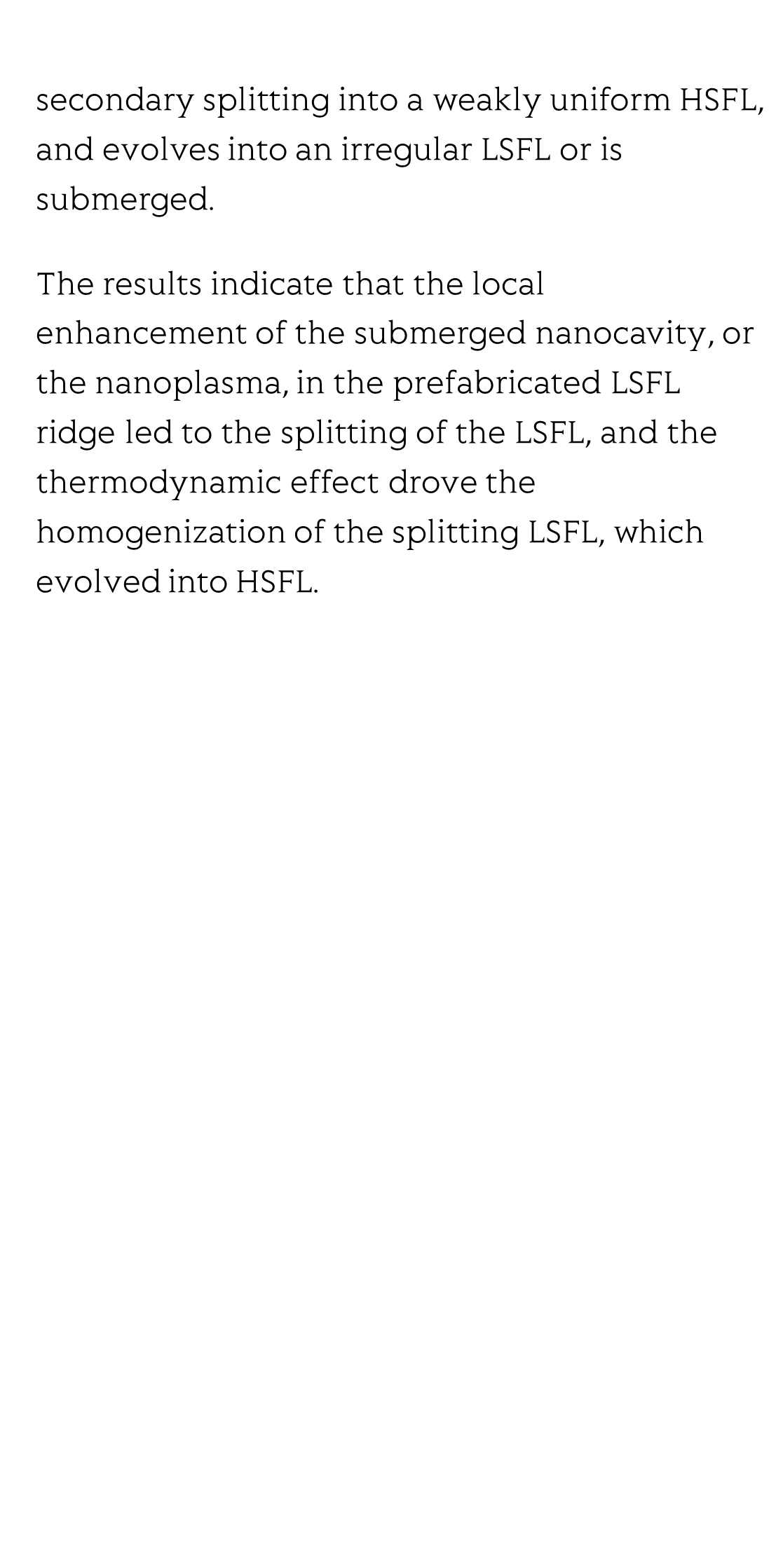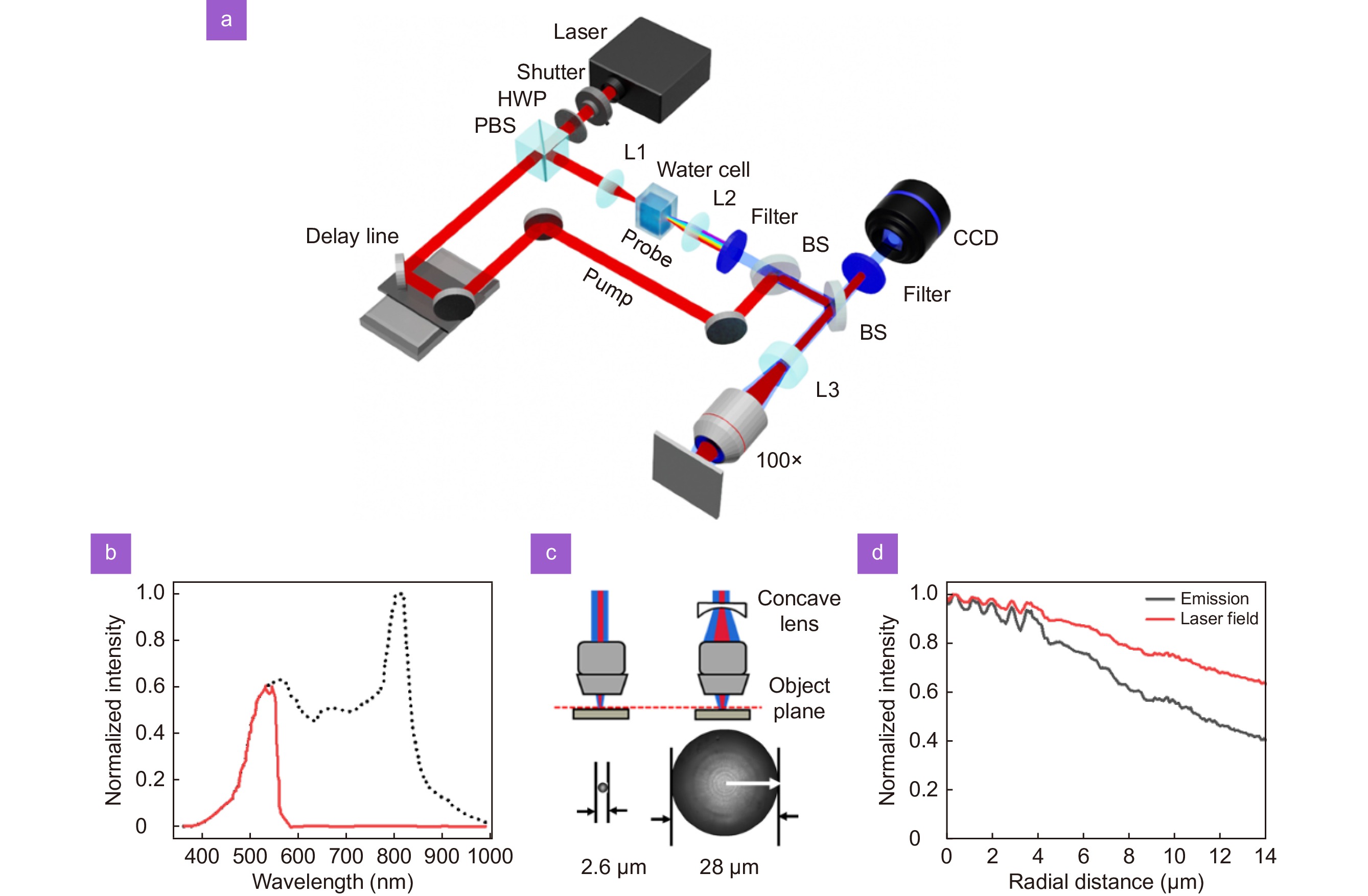(Peer-Reviewed) Ultrafast dynamics of femtosecond laser-induced high spatial frequency periodic structures on silicon surfaces
Ruozhong Han 韩若中 ¹, Yuchan Zhang 张羽婵 ¹, Qilin Jiang 蒋其麟 ¹, Long Chen 陈龙 ², Kaiqiang Cao 曹凯强 ³, Shian Zhang 张诗按 ¹, Donghai Feng 冯东海 ¹, Zhenrong Sun 孙真荣 ¹, Tianqing Jia 贾天卿 ¹ ² ⁴
¹ State Key Laboratory of Precision Spectroscopy, School of Physics and Electronic Science, East China Normal University, Shanghai 200241, China
中国 上海 华东师范大学物理与电子科学学院 精密光谱科学与技术国家重点实验室
² Institute of Laser Manufacturing, Henan Academy of Sciences, Zhengzhou 450046, China
中国 郑州 河南省科学院激光制造研究所
³ Institute of Physics, Chinese Acadamy of Sciences, Beijing 100190, China
中国 北京 中国科学院物理研究所
⁴ Collaborative Innovation Center of Extreme Optics, Shanxi University, Taiyuan 030006, China
中国 太原 山西大学极端光学省部共建协同创新中心
Opto-Electronic Science
, 2024-03-22
Abstract
Femtosecond laser-induced periodic surface structures (LIPSS) have been extensively studied over the past few decades. In particular, the period and groove width of high-spatial-frequency LIPSS (HSFL) is much smaller than the diffraction limit, making it a useful method for efficient nanomanufacturing. However, compared with the low-spatial-frequency LIPSS (LSFL), the structure size of the HSFL is smaller, and it is more easily submerged. Therefore, the formation mechanism of HSFL is complex and has always been a research hotspot in this field.
In this study, regular LSFL with a period of 760 nm was fabricated in advance on a silicon surface with two-beam interference using an 800 nm, 50 fs femtosecond laser. The ultrafast dynamics of HSFL formation on the silicon surface of prefabricated LSFL under single femtosecond laser pulse irradiation were observed and analyzed for the first time using collinear pump-probe imaging method. In general, the evolution of the surface structure undergoes five sequential stages: the LSFL begins to split, becomes uniform HSFL, degenerates into an irregular LSFL, undergoes secondary splitting into a weakly uniform HSFL, and evolves into an irregular LSFL or is submerged.
The results indicate that the local enhancement of the submerged nanocavity, or the nanoplasma, in the prefabricated LSFL ridge led to the splitting of the LSFL, and the thermodynamic effect drove the homogenization of the splitting LSFL, which evolved into HSFL.
Review for wireless communication technology based on digital encoding metasurfaces
Haojie Zhan, Manna Gu, Ying Tian, Huizhen Feng, Mingmin Zhu, Haomiao Zhou, Yongxing Jin, Ying Tang, Chenxia Li, Bo Fang, Zhi Hong, Xufeng Jing, Le Wang
Opto-Electronic Advances
2025-07-17
Multiphoton intravital microscopy in small animals of long-term mitochondrial dynamics based on super‐resolution radial fluctuations
Saeed Bohlooli Darian, Jeongmin Oh, Bjorn Paulson, Minju Cho, Globinna Kim, Eunyoung Tak, Inki Kim, Chan-Gi Pack, Jung-Man Namgoong, In-Jeoung Baek, Jun Ki Kim
Opto-Electronic Advances
2025-07-17
Non-volatile tunable multispectral compatible infrared camouflage based on the infrared radiation characteristics of Rosaceae plants
Xin Li, Xinye Liao, Junxiang Zeng, Zao Yi, Xin He, Jiagui Wu, Huan Chen, Zhaojian Zhang, Yang Yu, Zhengfu Zhang, Sha Huang, Junbo Yang
Opto-Electronic Advances
2025-07-09
CW laser damage of ceramics induced by air filament
Chuan Guo, Kai Li, Zelin Liu, Yuyang Chen, Junyang Xu, Zhou Li, Wenda Cui, Changqing Song, Cong Wang, Xianshi Jia, Ji'an Duan, Kai Han
Opto-Electronic Advances
2025-06-27
Operando monitoring of state of health for lithium battery via fiber optic ultrasound imaging system
Chen Geng, Wang Anqi, Zhang Yi, Zhang Fujun, Xu Dongchen, Liu Yueqi, Zhang Zhi, Yan Zhijun, Li Zhen, Li Hao, Sun Qizhen
Opto-Electronic Science
2025-06-25
Observation of polaronic state assisted sub-bandgap saturable absorption
Li Zhou, Yiduo Wang, Jianlong Kang, Xin Li, Quan Long, Xianming Zhong, Zhihui Chen, Chuanjia Tong, Keqiang Chen, Zi-Lan Deng, Zhengwei Zhang, Chuan-Cun Shu, Yongbo Yuan, Xiang Ni, Si Xiao, Xiangping Li, Yingwei Wang, Jun He
Opto-Electronic Advances
2025-06-19







